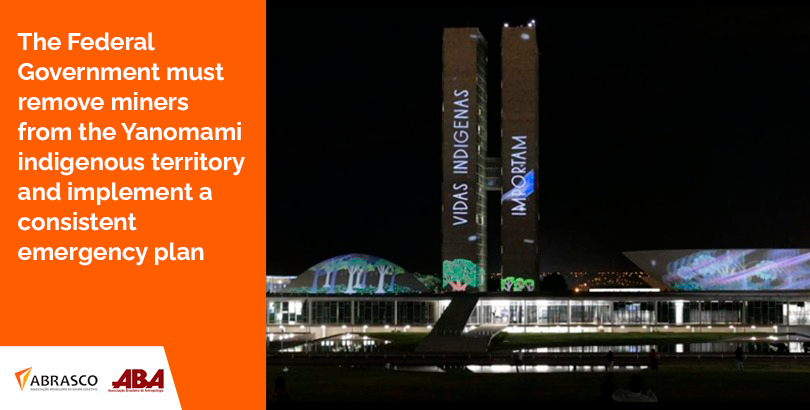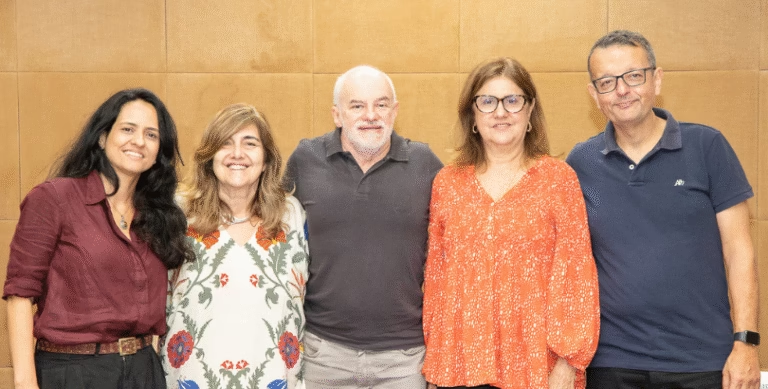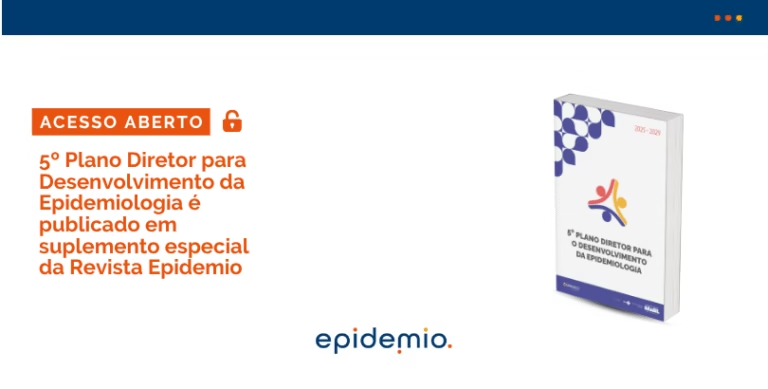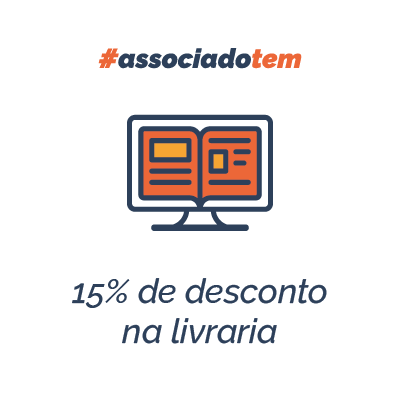
The Brazilian Association of Anthropology (ABA) and the Brazilian Association of Collective Health (Abrasco) are now requesting a statement from the international academic and non-academic community in the face of the Brazilian Federal Government’s omissive and conniving attitude towards the alarming situation experienced by the Yanomami and Ye’kwana peoples in the Yanomami Indigenous Territory (TIY), located on the border of Brazil and Venezuela. Once again, the gold mining industry has invaded their traditional territory, which has mobilized more than twenty thousand people to occupy and degrade their lands, forests, waterways, food sources, health, and community life in recent years.
Not even the risk of Covid-19 reaching local Yanomami groups with difficult access to health services, which could cause numerous deaths and different complications, has motivated the Federal Government and its agencies to protect these peoples. Remove from indigenous territory the principal source of disease transmission and degradation, mining.
The impacts of “development” projects and invasions on the Yanomami people’s health and lives have been recorded for many decades. In the 1970s, during the Perimetral Norte/BR-210 highway construction, infectious diseases killed between 22% and 50% of the village populations directly and indirectly impacted by their implementation (1). Between 1987 and 1990, the invasion of miners in Yanomami territory generated epidemics of malaria and other diseases, which caused the death of at least 15% of the indigenous population. The situation did not become more severe because pressured by different authorities, the federal government initiated the removal of the miners and implemented an emergency plan for Yanomami health care (2, 3, 4).
After almost two decades of control and monitoring policies for the Yanomami Indigenous Territory, the decrease in investment for monitoring and the deactivation of the Funai Protection Bases in the Yanomami Indigenous Territory at the end of the 2000s created the conditions for the gold mining activity to advance again in different parts of the indigenous land. In recent years, Yanomami and Ye’kwana leaders and their representative organizations, such as the Hutukara Yanomami Association and the Wanasseduume Ye’kwana Association, have reiterated several reports of invasions by miners and their social, environmental, and health consequences.
A study carried out in the Yanomami Indigenous Territory in 2014 looked at the villages of the Paapiú and Waikás region, where indigenous peoples of the Yanomami and Ye’kwana ethnic groups live. The objective was to evaluate the exposure of indigenous peoples to mercury (Hg) from gold mining activities, and high levels of contamination were found, especially among children and women of reproductive age. At the time, the number of miners in the Yanomami Indigenous Territory was 5,000. Today, estimates are that this number is almost five times greater, and the area occupied and degraded by gold mining and mercury contamination has expanded (5, 6).
The document released in November 2020 by the Yanomami and Ye’kwana Leadership Forum (7) and the Pro-Yanomami and Ye’kwana Network (8) emphasize the damage of the Bolsonaro’s government, regard to the first two years: there was an exponential growth of illegal mining and deforestation in the Yanomami Indigenous Territory the Uraricoera, Mucajaí, Couto Magalhães, Catrimani, Parima, and Apiaú rivers were the most impacted. In addition, there was a significant increase in malaria cases in the indigenous population, which combined with Covid-19 profoundly worsened the health context in the Yanomami Indigenous Territory. Covid-19 was spread by miners in the three most environmentally degraded areas, Waikás, Kayanau, and Aracaçá (9, 10).
Between 2019 and 2021, the dismantling of primary health care for the indigenous population in the country affected the logistical and operational capacity of the Yanomami Special Indigenous Health District (DSEI-Y), responsible for health care in the Yanomami Indigenous Territory. The District is part of the Indigenous Peoples’ Health Care Subsystem (Sasi/SUS), coordinated by the Special Indigenous Health Department (Sesai) of the Ministry of Health.
When Covid-19 entered in Indigenous Territories immediately, the Articulation of the Indigenous Peoples of Brazil (APIB) in the Federal Supreme Court (STF) wrote the Action of Noncompliance with the Fundamental Precept (ADPF) No. 709 that resulted in condemned the omission of the federal government. The government was forced to act later, and the measures were not to contain the invaders due to the expansion of the new coronavirus among the indigenous population.
The surveys and analyses conducted by the Abrasco Indigenous Health Working Group in support of APIB were presented last May in the context of ADPF No. 709. They gave social and health tragedy among the Yanomami Indigenous Territory consequence by the intentional inaction of the Federal Government and its agencies to take and punish the centers of mining activity and theirs responsible.
Malaria affected about 64% of the population in 2019 and 67% in 2020 if we do not consider reinfections in the same individual; 34% of infections were by plasmodium falciparum, a species associated with both more severe cases and the lack of appropriate measures for control, diagnosis, and treatment (11).
The death of two Yanomami children last November and the context of conflict generated by the mining presence in the Yanomami Indigenous Territory gained repercussion in the national and international media. The disturbing images presented at broadcasted in the Fantástico on 11/14/2021 in the leading open television network of the country (12). Luís Roberto Barroso, Minister of the Federal Supreme Court, ordered the Union to report within five days about the nutritional situation of the Yanomami population: as their access to drinking water, health services provided, and the implementation of measures from the General Plan for Fighting Covid-19, under ADPF 709. The response from the Attorney General of the Union (AGU) presented on 11/22/2021 was evasive. It practically takes off the Special Department for Indigenous Health (SESAI) of its responsibility and transfers the visible inoperability of the population’s primary health care measures to the Yanomami. Budgetary and the number of contracts and services provided by the Federal Government do not allow for a consistent analysis of planning and implementing actions to impact the Yanomami people’s health (13).
The Brazilian Association of Anthropology (ABA) and the Brazilian Association of Collective Health (Abrasco) emphatically support the urgent appeal of the indigenous peoples regarding the gravity of the health situation and the urgency of measures to protect life and health of the Yanomami and Ye’kwana peoples. It is clear that the invaders are among the main culprits of this calamity and must be urgently removed. In addition, it is essential to articulate a consistent Emergency Intersectoral Plan for Health Care and Territorial Control, with inter-institutional participation. That means involving indigenous organizations, federal and state government and municipal executive, judicial bodies, indigenous entities, and academic institutions are necessary when the indigenous peoples face such a difficult situation.
We ask for the support and resounding manifestation of the international academic and non-academic community. We demand an end to the genocide of the Yanomami people!
Click here to Download the PDF version
References
1. Ramos, Alcida R. O papel político das epidemias: o caso Yanomami. Série Antropologia 153, pp. 2-21, 1993.
2. DSY/FNS. Primeiro Relatório do Distrito Sanitário Yanomami. Avaliação das Atividades e Diagnóstico de Saúde. Boa Vista, RR: Distrito Sanitário Yanomami, Fundação Nacional de Saúde, Ministério da Saúde, 1991.
3. CCPY. Genocídio do Yanomami: Morte no Brasil. São Paulo, SP: Comissão pela Criação do Parque Yanomami, 1989.
4. Athila, Adriana R. A Emergência do Distrito Sanitário Yanomami: uma análise sociopolítica. Em: Políticas Antes da Política de Saúde Indígena: embates e debates, organizado por Ana Lucia de Moura Pontes, Felipe Rangel de Souza Machado e Ricardo Ventura Santos. Rio de Janeiro, RJ: Editora Fiocruz, 2021, p. 231-276.
5. Bastos, Paulo C. & Hacon, Sandra de S. (Coords.) Avaliação da exposição ambiental ao mercúrio proveniente de atividade garimpeira de ouro na Terra Indígena Yanomami, Roraima, Amazônia, Brasil. Rio de Janeiro, RJ: Fundação Oswaldo Cruz (Fiocruz), Pontifícia Universidade Católica do Rio de Janeiro (PUC-RJ); São Paulo, SP: Instituto Socioambiental (ISA); Boa Vista: Hutukara Associação Yanomami (HAY), 2016.
6. Elevados níveis de contaminação por mercúrio preocupam comunidade indígena Yanomami. Informe ENSP, publicado em 08/04/2016. Disponível em: http://informe.ensp.fiocruz.br/noticias/39388
7. O Fórum de Lideranças Yanomami e Ye’kwana é a principal instância de decisão da Terra Indígena Yanomami. Foi constituído em meados de 2019 e é formado pela Hutukara Associação Yanomami (HAY), Associação Wanasseduume Ye’kwana (SEDUUME), Associação das Mulheres Yanomami Kumirayoma (AMYK), Texoli Associação Ninam do Estado de Roraima (TANER), Associação Yanomami do Rio Cauaburis e Afluentes (AYRCA), Associação Kurikama Yanomami (AKY) e Hwenama Associação dos Povos Yanomami de Roraima (HAPYR).
8. A Rede Pró-Yanomami e Ye’kwana foi criada em abril de 2020, é formada por mais de 50 pesquisadores e apoiadores dos povos Yanomami e Ye’kwana, entre antropólogos, linguistas, médicos, indigenistas, advogados e artistas em diálogo direto com os indígenas e suas associações.
9. Machado, Ana Maria et. al (orgs.). Xawara: rastros da Covid-19 na Terra Indígena Yanomami e a omissão do Estado. São Paulo, SP: Instituto Socioambiental, 2020. Disponível em: https://acervo.socioambiental.org/acervo/publicacoes-isa/xawara-rastros-da-covid-19-na-terra-indigena-yanomami-e-omissao-do-estado
10. Os números oficiais são de que até 02/12/2021 foram confirmados 2.123 casos de covid-19 entre a população indígena atendida pelo DSEI-Y e um total de 22 óbitos. Pela modelagem da vulnerabilidade dos povos indígenas no Brasil a covid-19, elaborada conjuntamente pelo Centro de Sensoriamento Remoto da Universidade Federal de Minas Gerais (CSR/UFMG) e o Instituto Socioambiental (ISA), a TIY é a segunda Terra Indígena com maior índice de vulnerabilidade. Disponível em: https://covid19.socioambiental.org/?gclid=Cj0KCQiA-qGNBhD3ARIsAO_o7ylUK-bzT9rjR2tr3_7ODc1_Lxbci6egg_4VOX7hViSoDz83NS17HAUaAvw7EALw_wcB
11. Abrasco – Associação Brasileira de Saúde Coletiva. Grupo de Trabalho em Saúde Indígena. Nota Técnica do Grupo de Trabalho em Saúde Indígena da Associação Brasileira de Saúde Coletiva (ABRASCO) apresentada para a Articulação dos Povos Indígenas do Brasil (APIB) no âmbito da Arguição por Descumprimento de Preceito Fundamental (ADPF) 709. Rio de Janeiro: ABRASCO, 17 mai. 2021. Disponível em: https://abrasco.org.br/wp-content/uploads/2021/05/Nota-Tecnica-Abrasco-17-05-final-corrigida-1-1.pdf
12. Disponível em: https://g1.globo.com/rr/roraima/noticia/2021/11/20/mais-uma-crianca-yanomami-morre-e-outra-esta-em-estado-grave-por-falta-de-atendimento-relata-conselho-de-saude.ghtml
13. AGU – Advocacia Geral da União. Arguição por Descumprimento de Preceito Fundamental 709. Brasília, 22 de novembro de 2021.





